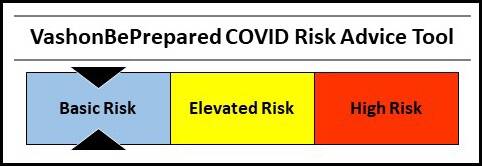Vashon Pharmacy pre-ordered the new COVID vaccine version approved last week by the Centers for Disease Control and Prevention (CDC).
Pharmacy owner Tyler Young is waiting on final confirmation of shipment of the vials of vaccine before opening up appointment slots for the new vaccine. Here’s a link for you to select your vaccines and pick an appointment day and time.
Combining Vaccinations
There are three vaccines available for this year’s respiratory illness season. In addition to the latest COVID vaccine, there is this year’s edition of the annual flu vaccine. And, if you’re 60 or older, you can get the new vaccine for Respiratory Syncytial Virus (RSV).
There’s wide agreement among experts that it’s fine to get the COVID and flu vaccinations at the same time. However, because RSV is a new vaccine and data about vaccine interactions are still limited, there’s not yet consensus about whether you should get the RSV vaccine at the same time as the COVID or flu vaccines.
The choice of which vaccines to get and when will be yours. Many experts are suggesting that you discuss the choice with your doctor or vaccine provider.
Because there is limited information about the simultaneous administration of the RSV vaccine with other adult vaccines, the Vashon Medical Reserve Corps recommends a two-week separation between the RSV vaccination and the other two — COVID and flu.
New Feature: Links of the Week
With this issue, we’re launching a new feature for our updates to the community. We’ll periodically provide some web page links full of detailed information to help you be safer and more prepared for whatever situations may arise.
Get Your Go Kit Here
This week, you can feel the change in the air as we move towards the first day of fall — September 23. The recent cool mornings tell us it will soon be storm season. Use the changing weather as a reminder to get your go kit together before really heavy weather arrives. Read on about our recommendations, as well as those from the Department of Health, and federal government.
Get Your Neighbors Together
When the snow blows and ice coats the roads and power lines (or when the earth shakes), you will want to be in touch with neighbors to help each other out in a pinch. We can help you form (or revive) a Neighborhood Emergency Response Organization (NERO).
Travel Prepared
The news has been full of the ways a vacation or family visit could find you dealing with a natural disaster while on the road. Wildfires on Maui and in Greece. Hurricanes, not just on the east coast but even in southern California. Earthquake in Morocco. You can be prepared for unexpected natural disasters while traveling. Read a comprehensive article from the Washington Post.
Vashon Risk Level: Still Basic
The COVID risk level for Vashon remains at Basic. The metrics have been slowly rising but the key hospitalization rate in our three-county exposure area remains below the trigger level for the higher Elevated Risk category.
At this risk level, wear an N95 mask indoors in public if you have been exposed to COVID, are at risk for health or other reasons, or live or spend time with someone at high risk.
Plan on getting the updated COVID and flu vaccines in early fall, as detailed above.
Maintain good ventilation at home and at work, and avoid those with suspected or confirmed COVID.
If exposed to COVID, wear a mask in public and avoid contact with those at high risk for 10 days.
Always home-test if you have symptoms. If you test positive, isolate for at least five days and until you test negative. Also check in right away with your doctor about treatment, even if your symptoms are initially mild.
If immunocompromised, discuss additional prevention actions with your healthcare provider.
The VashonBePrepared COVID Risk Advice Tool aggregates data in our exposure area, which includes King, Pierce and Kitsap counties. The primary metric evaluated by the Vashon Medical Reserve Corps is the COVID hospitalization rate because that is reliably reported by public health agencies.



